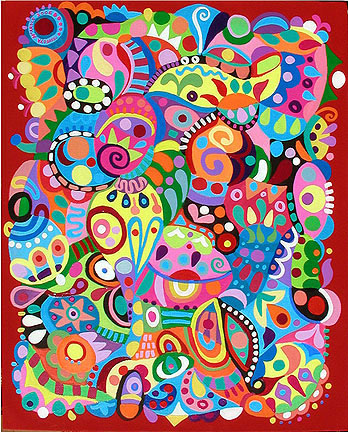What is aesthetically pleasing? This question could be so subjective. But as they say, beauty itself is subjective. One may see beauty the sublime, the uniqueness of a certain quality, and some may see it from a an artwork.
To begin with, I would ask myself what is beautiful or aesthetically pleasing for me. Of course, anything that is simple, with grace, colorful, or whatever it is that would define beauty, that I think would be what is beautiful.
In the way that I answered my question, I’m saying that whatever it is that is pleasing for other people would also be pleasing for me. It is the society that defines my on view of the beautiful, and not actually myself. This is what Hume tried to point out, that some people sees things, in general sense, in the same way. They agree on the idea that one thing is beautiful if it be judged in its general characteristics. And so, there’s possibility for a standard of taste, which now makes beauty objective in the sense that they will now define the boundary from what is beautiful and what is not.
aesthetics, a word associated with beauty. so simple yet so hard to define. as they say, everyone has their own way of seeing what is beautiful or how beautiful is beautiful. according to edmund burke’s ‘the sublime’, anything that astinishes the soul, in a state where all its motions are suspended, with some degree of horror. in this case the mind is so entirely filled with its object…. simply by this, it could already be said that sublimity depends on the ignorance of one person. what i mean is, when a person sees something, it will be according to how that person is being amazed by the object he sees, that he could consider it sublime or not. anything could be sublime as long as it will astonish one. a ‘promdi’, new in the city, could consider tall skyscrapers sublime for it is not everyday that she sees such things from the place she came from. ghosts could also be a sublime thing for anyone who sees it for the first time. between fear and awe, the thing that connects them is their ability to create great feelings or emotions to people. maybe this is one, if not the first, thing that people should consider in determining the beauty of something, which really contrasted to my own definition of beauty- which is anything that is pleasant to look at.
Kant discussed the way that each and every person experience beauty. He says that aesthetic experience if pure intuition. Which means that beauty again I judged subjectively according to the intuition of a person. When he sees an object, he would appreciate it as it is and not because of the other factors that makes it beautiful for him. Real aesthetic experience is that the judgment is between the eye and the object only and the mind is free from other intentions.
This idea of Kant could even be per se subjective. One can say to other people that the beauty he sees in an object is the real aesthetic experience, but the truth is, at the back of his mind, he already has intentions and desires that make him want or like that thing. I mean, for example, when I go to the mall and go window shop, I would look at the things from the window. Everything would just go past my eyes. My attention might get caught by the shoe, can I say that what happened there was the “aesthetic experience”? it might be yes, it might also be no, because in the first place, I went to that place to “window shop”; there is that kind of intention of being able to like something that I see. Also, I might have liked that certain shoe or it might have caught my attention because it was my “favorite” color or because that was the kind of shoe that I was always longing to buy, though in that day, I didn’t intend to “buy a shoe” but only to window shop. Something already defined or affected that aesthetic experience I had. I like Kant very much. with his idea that beauty is subjective, one thing comes to my mind, that no one can truly judge one to be “not beautiful”. and another one, it heightens up my self-esteem because it means that i won’t have to always listen to the comments of other people about me, especially everytime my sister teases me “hindi ka kagandahan”, and at the same time be happy when other people appreciates the way i look. this beauty, it really makes some people, like me, to be insecure of themselves, which i think is very bad because some people tends to be very harsh on their body. some would stop eating, become bulimic or anorexic when people comments on them that they are fat, which is not at all true.
one thing that I really learned in the lesson is that you shouldn’t always listen to what other people say about you, about your look, because whatever they say is not always important, though of course, one must also learn how to take good care of their self. beaing healthy is enough beauty for me.Now let’s go to the more specific sense of beauty. In art, they define beauty in every artwork according to the pleasure it gives without being based on concepts. This is this issue again. They say that it is not based on anything, though actually thee is always really something that makes one like something. For example, he lived a life where he always sees trees, mountains, animals and all that stuff found in rural areas like that in the backyard f Up Mindanao. He might have grew up a simple life. The tendency then is that, either he will see al kind of painting beautiful because he is ignorant of it, or the other thing might be that he would only appreciate things that have the pictures of the things that he grew up seeing for everyday of is life like the farm, the trees and the likes. Now. Let us go to art’s real definition. Of course, it would be impossible for me to define art by myself. So, before I give my own explanation, let me just quote some definitions first. To some “people”, art is….
For Plato, the forms are more real than the copies of them in the world of space and time. The forms in ‘nature’ are due to God, “whether from choice or necessity.”
Here ‘nature’ does not refer to the world of space-time, but to the world of forms, which is an abstract, spaceless, timeless reality. For Plato, art is an imitation of an imitation – like Van Gogh’s bed – and hence goes in the wrong direction from truth.
if art is three times removed from reality, then how would plato describe “physically” what he really meant of that thing “real”? or is it even seen physically? what was his basis of saying that there exists this kind of reality. i think he was just complicating things, you know, making people think about things, so they would go crazy and all that stuff. anyway, why the big fuss?.. i don’t really care if art really is three times removed from reality so long as i know how to appreciate art and that i know that it’s kust an imitation of whatever reality it tries to imitate. that is what it’s purpose is all about right? to imitate? the part there where they say that it’s only the “scientific” part of life that is important, i totality object. in the first place, why would there be art if there is it isn’t important to people? it may be an imitation, but it is already “natural” for people to make imitations, and nature does nothing in vain.. in conclusion, art, just like science, is very important. though they’re approach is different.
Art takes us away from, not closer to, the truth. For Plato, it is through philosophy that we know the truth, not art. Painting is not even an imitation of things as they are, but only as they appear. And Plato thinks that “The real artist . . . would be interested in realities, and not in imitations.” Painting gives us, not truth, but appearance. According to Plato, the arts, such as painting, are concerned with appearance, whereas philosophy is concerned with the truth. That is a main point of his allegory of the cave, in which the prisoners of the cave take shadows to be the truth when, in fact, they are only appearances. Plato do not insist on the truthfulness of an art but to what it intends to do, and that is to show reality. But I think Gombrich has a different view on this.
According to Gomrich, there are limits to objectivity, to reproducing nature or subject matter as exactly as possible.The following things influence an artist’s attempt to reproduce something “with the utmost fidelity:”
– The artist’s personality or temperament;
– His or her selective preferences. The angle at which an object is pictured and from what distance will have to be determined, as will what will be emphasized and what not;
– The style(s) of the artist (e.g. Picasso);
– The style(s) of the period in which the artist exists (e.g. Cubism, Fauvism, Abstract Expressionism).
Realism in painting, drawing, etc. is relative, not absolute. Different cultures at different times have different systems of pictorial representation. A culture has to learn to read the system of representation of another culture. A system of representation can be standard at one time or place and not in another. Art may really be like this. That though according to Plato art is objective because the artist only makes thing appear in his artwork just as how it truly appears in reality. But to Gombrich, there is still subjectivity to this. This just made my mind go twirl. Maybe with Benjamin things will be a lot clearer with his idea of the mechanical reproduction of art. Benjamin notes that, whereas it has always been possible to reproduce a work of art in principle through copying, “mechanical reproduction of a work of art represents something new.” Since the advent of photography, reproduction is no longer dependent on the hand, and accelerated the process of reproduction since “the eye perceives more swiftly than the hand can draw.”
Film in particular allows the artist to “keep pace with speech.”
“Even the most perfect reproduction of a work of art is lacking in one element: its presence in time and space, its unique existence at the place where it happens to be.”
“This unique existence of the work of art determined the history to which it was subject during the time of its existence.”
“This [its history] includes changes which it may have suffered in physical condition over the years as well as the various changes in its ownership.” This idea of reproduction thus has advantages and disadvantages. First, it deletes the classical uniqueness of art because there could be millions and millions of copy of one single art. It’s sense of being rare is gone. On the other hand, at least with mechanical reproduction we could be able to get hold of the art that we want so much in a lower cost. But what about photography as art. Barrett says that we commonly mistake photographs for mirrors of or windows onto reality, so that photographs are taken to picture things as they really were, or to think of them as “mere mechanical transcriptions unencumbered by knowledge and values.”
However this is incorrect, and he says that the photographer’s eye, as Nelson Goodman puts it about the artist’s eye, “selects, rejects, organizes, discriminates, associates, classifies, analyzes, and constructs. It does not so much mirror as take and make, and what it takes and makes it sees not bare, as items without attribution, but as things. Nothing is seen naked.”
Terry Barrett: “The meaning of any photograph is highly dependent on the context in which it appears.”
Each of the preceding four slides contains the same photographs, but the photographs function differently according to the context provided by the accompanying language. A linguistic context in which a photograph is situated shapes how a photograph is seen.
Barrett: “The texts that surround the photograph eliminate any residual ambiguity and decide the meaning of the picture.”
A photograph paired with language does not stand alone, but takes on a meaning determined by that language, and so the “same” photograph can have a different meaning by being pared with language that makes us attend to it differently.
Barrett also talks of “different presentational environments,” which “in themselves determine how viewers are to understand the photograph.” Such presentational environments would include a commercial or not-for-profit brochure, a magazine, a newspaper, a gallery or museum, or an art book.
A photograph’s presentational environment tells its observer how it is to be understood and responded to.
A photograph paired with language does not stand alone, but takes on a meaning determined by that language, and so the “same” photograph can have a different meaning by being pared with language that makes us attend to it differently.
Barrett also talks of “different praesentational environments,” which “in themselves determine how viewers are to understand the photograph.” Such presentational environments would include a commercial or not-for-profit brochure, a magazine, a newspaper, a gallery or museum, or an art book.
A photograph’s presentational environment tells its observer how it is to be understood and responded to.
A photograph not intended by its maker to be seen as fine art can come to be seen as such by exhibiting it in a museum or gallery.
When this happens, the photograph is transformed. For instance, a journalistic photograph is looked at one way in a newspaper, and is looked at differently as framed and displayed on the wall of a gallery. In the context of a newspaper, the photograph functions as visual information which reinforces the language of reporting as it is itself shaped by the reporting which it supports. In a fine art context it would be viewed aesthetically, and its aesthetic success would be assessed in formal terms.
In film, many ideas are presented. To give a simple explanation of some of those ideas, I’ll give my short criticism of a film based on them, where the film I’ll use would be Kubrador. Getting into the technical side of the film, it is evident that the movie is a low-budget film because it could be noticed that the camera shots are coming from few angles, which led me to the conclusion that they might be using only one to three cameras. Also, the cinematography is not as good as the Hollywood-produced films, with those glossy shots. Because the film intends to give revelations of the “reality”, the shots are coming from angles where “reality” will also be seen. The shots were not “manicured” to hide the ugliness of the setting, which is the squatter’s area. As seen in the movie, one would not think twice that the place is really a squatters’ area, which is typically dirty, unmanaged , small and very close houses, and with narrow streets. In short, the director succeeded in presenting the setting as realistic as it can be for the audience.
According to Noel Carroll, there are three formal devices for directing the movie’s audience’s attention which are indexing, bracketing and scaling. These three elements were not all present in the film “kubrador” and were not emphasized like to the other films because I think what the director intended was to get shots from distances that will define the detachment of the characters from the viewers or the audience. The one “seeing” the events in the life of the “kubrador” would then be always “away”, like a bystander, in such a way. The film doesn’t have those dramatic effects like that in the movie Citizen Kane, where the presence of indexing or the “pointing” was obvious. In the beginning of the film, there is this man walking along the alley of the squatters are. He seems to be going somewhere. The camera shot was form behind him. The camera moves with that man, like someone was actually following him. I noticed that the shot was coming from a “moving” camera because of the unsteady shots. So, it might be that the cameraman was really following the actor while they were shooting and not just zooming in the image so it would look like it’s following the man. This added to the sense of “reality” in the movie. Because in reality, when a man is in motion, his perspective is also in motion. The three formal devices of Carroll intends to assure the spectator that he is perceiving exactly what he should be perceiving as the precise moment he should be perceiving it. When the camera comes in for a close up, there is no possibility that the spectator can be distracted by some detail stage-left. The spectator doesn’t have to find the significant detail because is already delivered. And this assurance was also seen in the movie. The viewers are assured that what they will see on screen is what they ought to see. Though, there was almost no close-up shots in the movie because the director might intend to give a far-off view of the important object to also give the audience a concrete view of what was going on in relation to that object of importance. There is a sense of consistency in the film regarding this matter where the director defines the important objects at a certain time, but at the sometimes consider the setting round that object. The setting thus becomes part of all that is important in the film. I will discuss further on this matter later. Another, I noticed that when the camera moves towards an object, they do not bracket everything to be outside the camera focus, rather only half or a part of those things that might be “unimportant” to some scenes in the movie. Example, the part there in the movie where the focus was the main character while walking along the streets of their place, with her umbrella hooked hanging on her dress and with her bag in her right shoulder while she was smoking, the camera was focused on her from one side from the rear, but the look of the place could still be seen from that angle. There was also a part there when she accidentally stepped on a dog shit. The first thing that could be seen was her expression, then the camera moves from her face to her body, to her feet, to the back of her slippers where the shit got stuck. This scene, I bet, according to what I’ve experienced, will never fail to make anyone who will watch the film feel the “yuckiness”. They will suddenly imagine themselves being on the same situation, or some same memories will suddenly rush through. It will always give a good laugh. This kind of feeling might be simple a feeling but the process of getting this feeling effectively demands techniques. And the technique in this film indeed was effective. The device of bracketing was properly used. Now we go to the ideas of Laura Mulvey. Mulvey talked about the issue of sexuality in film. Traditionally, the woman displayed on film has functioned on two levels: as erotic object for the characters within the screen story, and as erotic object for the spectator within the auditorium, with a shifting tension between the looks on either side of the screen.
In the Philippines, gender discrimination is an issue; that males are dominant compared to females. I did not research if the director of Kubrador was a male or a female because I think the gender of the filmmakers are not the issue here, rather the gender focus on the film. I think that the film was feministic, only because the main character was a woman. But feministic or not, the film surely was not made to focus the woman, the main character, as an object of desire or an erotic object. This one is or sure because even if most of the time, the camera was focused on the woman, there were no shots which focused on the “sexually desirable” parts of her body, and in the first place, the woman is blatantly not sexually desirable! There was even a part there in the movie where the woman took off her clothes and changed it. The scene was taken in the angle and sense that there will be no any kind eroticism. If it had been a different movie, the tendency would be that they would close-up some particular parts like the bosom or the legs, then slow down the motion while she was taking off her clothes to create this eroticism, but with that kind of body, it would probably just create a funny scene. The film again has not failed the audience of focusing the only to the life of the main character of the woman as kubrador by being sensitive not to show any sense of aura that would be unnecessary for the film.
To conclude, aesthetics, no matter one, however smart and intelligent that person is, justifies his idea on it, is still subjective at the end of the day, and will always be subjective. It’s like a question to oneself that could never have answers; like if humans really evolved from apes or have we been created by the omnipotent one, or what is the missing link, or what came first: the egg of the chicken, or why did the chicken cross the road, or who really killed Magellan. The world is full of uncertainties, that’s for sure. So, to be able to recognize beauty could be a big deal or it could also be not. It all depends on the person if he lets himself get affected by this matters of the world, or would he rather focus on world peace.


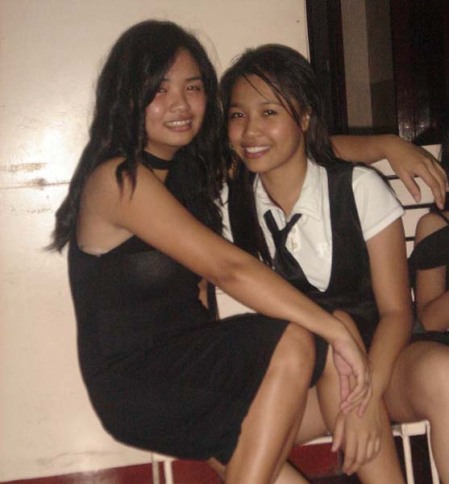

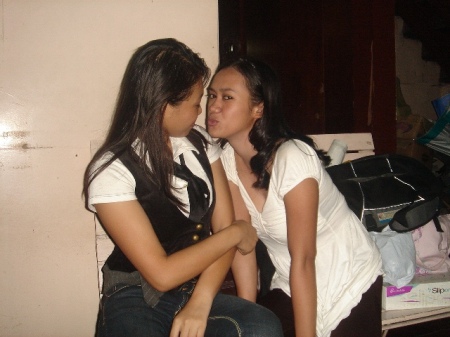
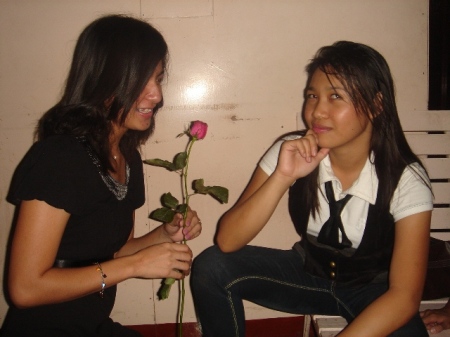
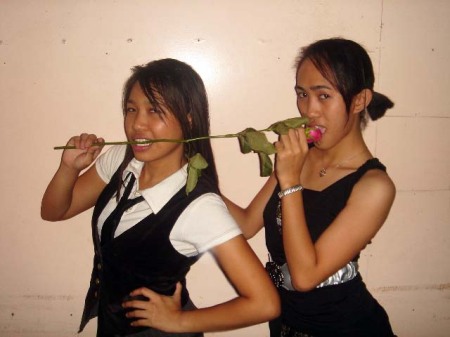

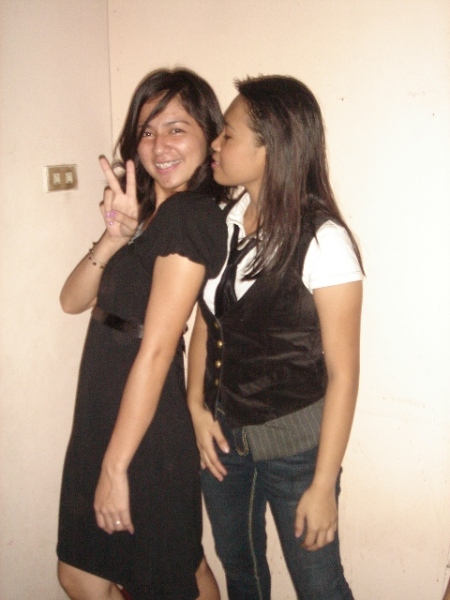
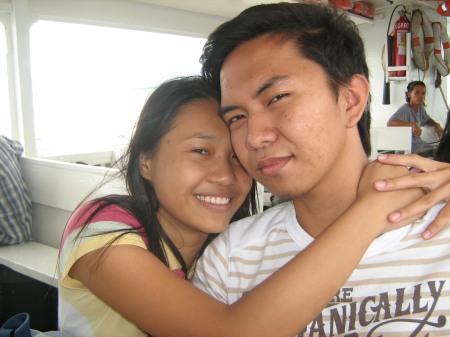

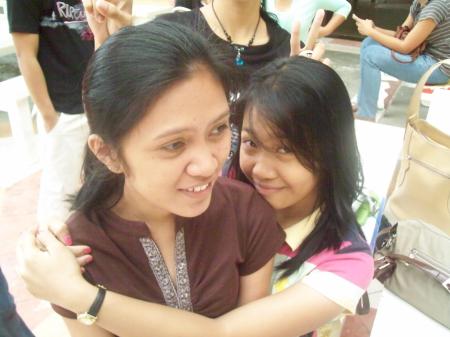
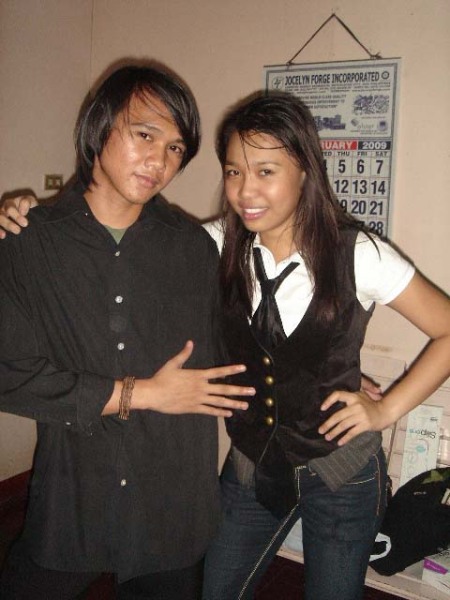



 society, the economy and the government. The film was about a ‘kubrador”, the type of life she lived, the experiences she has undergone, her fears, and her sentiments as a longing mother, a wife, a neighbor, and a “kubrador”. Many revelations were shown in the movie, from a person’s personal problems to the government official’s crime of involving themselves to such illegal act of graft and corruption. Another big issue presented was the illegal “jueteng”, a game played mostly by people of the lower class society. It is operated by people from a higher class society. Many patronize it even if it is illegal.
society, the economy and the government. The film was about a ‘kubrador”, the type of life she lived, the experiences she has undergone, her fears, and her sentiments as a longing mother, a wife, a neighbor, and a “kubrador”. Many revelations were shown in the movie, from a person’s personal problems to the government official’s crime of involving themselves to such illegal act of graft and corruption. Another big issue presented was the illegal “jueteng”, a game played mostly by people of the lower class society. It is operated by people from a higher class society. Many patronize it even if it is illegal.

